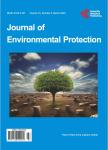Invasion of <i>Cestrum aurantiacum</i>Lindl. in Kenya
Invasion of <i>Cestrum aurantiacum</i>Lindl. in Kenya作者机构:Ministry of Environment and Forestry Kenya Forest Service Resources Elgeyo Marakwet County Cherangani Forest Station Kapcherop Kenya
出 版 物:《Journal of Environmental Protection》 (环境保护(英文))
年 卷 期:2018年第9卷第6期
页 面:671-690页
学科分类:1002[医学-临床医学] 100214[医学-肿瘤学] 10[医学]
主 题:Cestrum aurantiacum Lindl Invasive Species Kenya Ecosystem Impacts
摘 要:Many forest ecosystems in Kenya are at risk from the invasion of exotic plant species that pose numerous threats like decreasing biodiversity, deteriorating ecosystem processes and degrading their services. They also affect human, other animal health and various angles of the general economy. Cestrum aurantiacum Lindl. is a species with invasive reputation having been reported with very high biological success rating and has been noted in parts of Kenya in proportions that raise concerns. It has negative effects on other plants and animal species function and diversity. These impacts have been recorded in Kenya and elsewhere in this review, I synthesized data from studies that have examined the taxonomy of Cestrum aurantiacum, how this species become part of the ecosystem in Kenya and its ecological and economic impacts. I sourced relevant articles from the internet using keywords relating to the taxonomy, impacts and reports of invasive species and narrowed to records from different parts of Kenya. In this review, I looked across twenty-seven studies, on Cestrum aurantiacum in Kenya and went ahead to review one hundred and thirteen other articles for expanded discussion. Species data in published articles from different parts of Kenya were used as georefences to model overall species distribution which was noted to lie between Mt Kenya, Mt Elgon-Nandi hills and Cherangani hills. It was clearly established that there are major adverse effects associated with species. First, it can change native ecosystem processes such as nutrient cycle or hydrology and contribute significant role on the decrease of native species. A primary risk of Cestrum aurantiacum is that when this species alters the biodiversity, ecosystems are transformed into new configurations with unpredictable consequences to humans and other wildlife in totality. Despite the few positive applications of cestrum species, these can’t compensate for the enormous detrimental consequences associated with the



